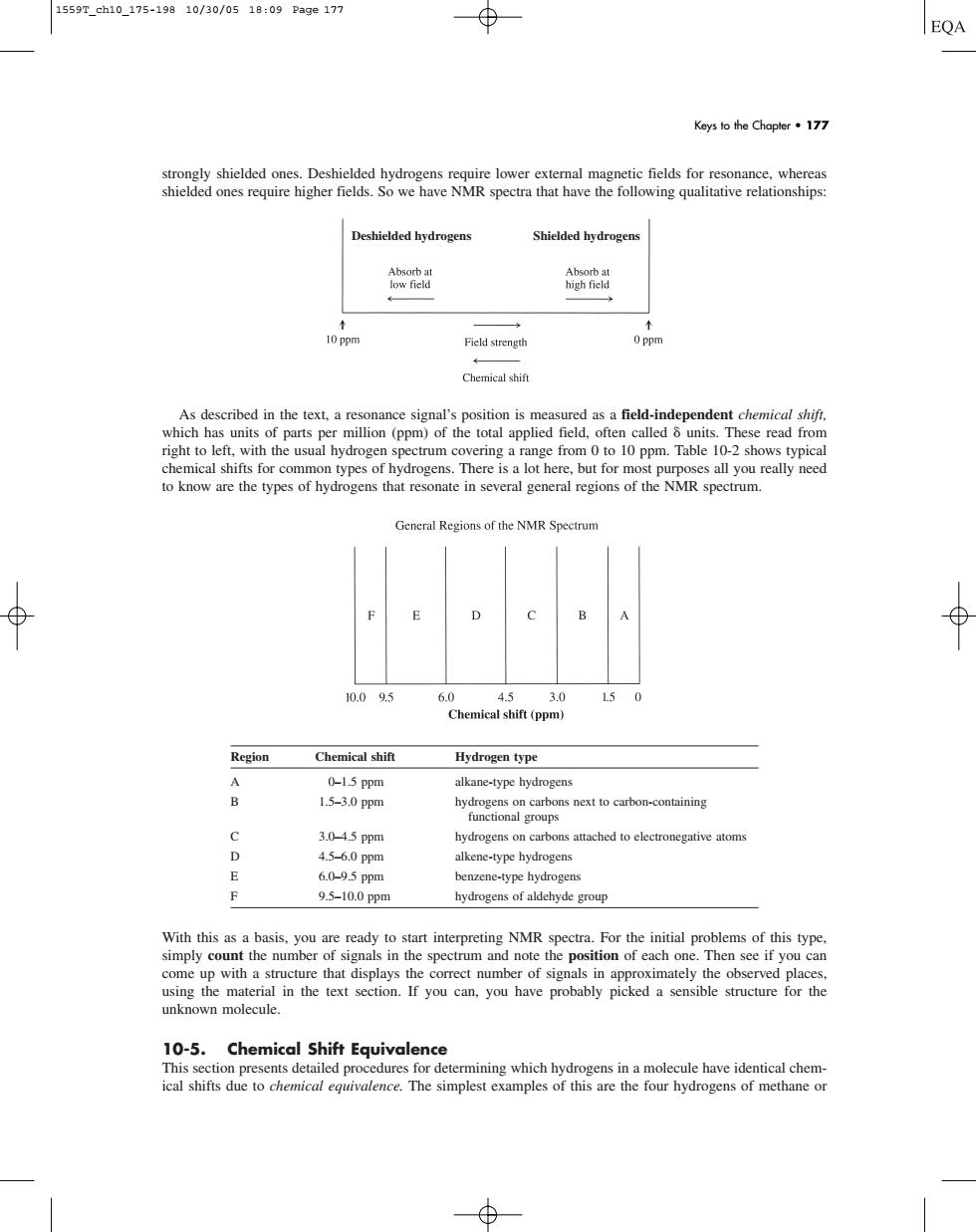正在加载图片...

1559Tch10175-19810/30/0518:09Page177 EQA Keys to he Chapler·177 Deshielded hydrogens Shielded hydroge 甜 Field strength Chemical shift thefield-independent m ppm.Table 10-2 shows typica General Regions of the NMR Spectrum 风 B N 10.09.3 150 Chemical shift Hydrogen typ 0-1.5 Ppm alkane-type hydrogens 1.5-30pg oasettocarton-conthaining 3.045ppm hydrogens on carbons attached to electronegative atoms 4.5-6.0ppm alkene-type hydrogens 6.0-9.5pp benzene-type hydrogens 9.5-10.0ppm hydrogens of aldehyde group With thisas a basis.ady to start NMR spectra.For the intial problems of tis typ come up that displays the correct number of approxmately the observed place hmrin th text section.If you can.you have probably picked a seblestuctre for the This section ical shifts due to chemical eauivalence.The simplest examples of this are the four hydrogens of methane orstrongly shielded ones. Deshielded hydrogens require lower external magnetic fields for resonance, whereas shielded ones require higher fields. So we have NMR spectra that have the following qualitative relationships: As described in the text, a resonance signal’s position is measured as a field-independent chemical shift, which has units of parts per million (ppm) of the total applied field, often called units. These read from right to left, with the usual hydrogen spectrum covering a range from 0 to 10 ppm. Table 10-2 shows typical chemical shifts for common types of hydrogens. There is a lot here, but for most purposes all you really need to know are the types of hydrogens that resonate in several general regions of the NMR spectrum. Region Chemical shift Hydrogen type A 0–1.5 ppm alkane-type hydrogens B 1.5–3.0 ppm hydrogens on carbons next to carbon-containing functional groups C 3.0–4.5 ppm hydrogens on carbons attached to electronegative atoms D 4.5–6.0 ppm alkene-type hydrogens E 6.0–9.5 ppm benzene-type hydrogens F 9.5–10.0 ppm hydrogens of aldehyde group With this as a basis, you are ready to start interpreting NMR spectra. For the initial problems of this type, simply count the number of signals in the spectrum and note the position of each one. Then see if you can come up with a structure that displays the correct number of signals in approximately the observed places, using the material in the text section. If you can, you have probably picked a sensible structure for the unknown molecule. 10-5. Chemical Shift Equivalence This section presents detailed procedures for determining which hydrogens in a molecule have identical chemical shifts due to chemical equivalence. The simplest examples of this are the four hydrogens of methane or Deshielded hydrogens Shielded hydrogens Keys to the Chapter • 177 1559T_ch10_175-198 10/30/05 18:09 Page 177�